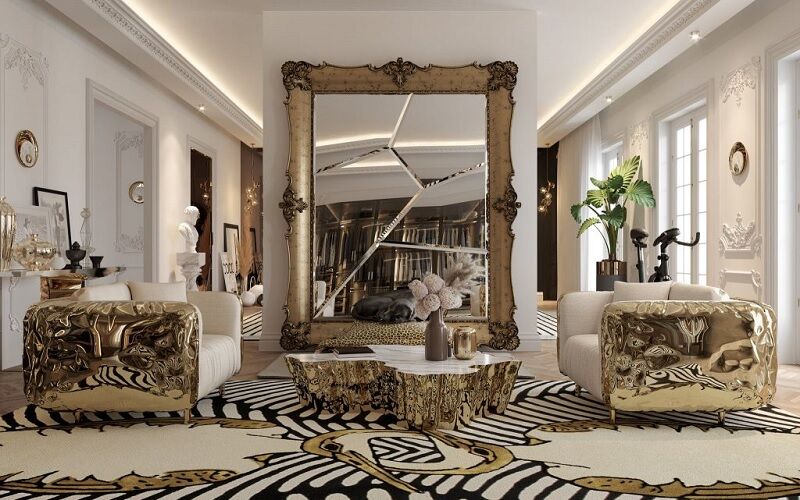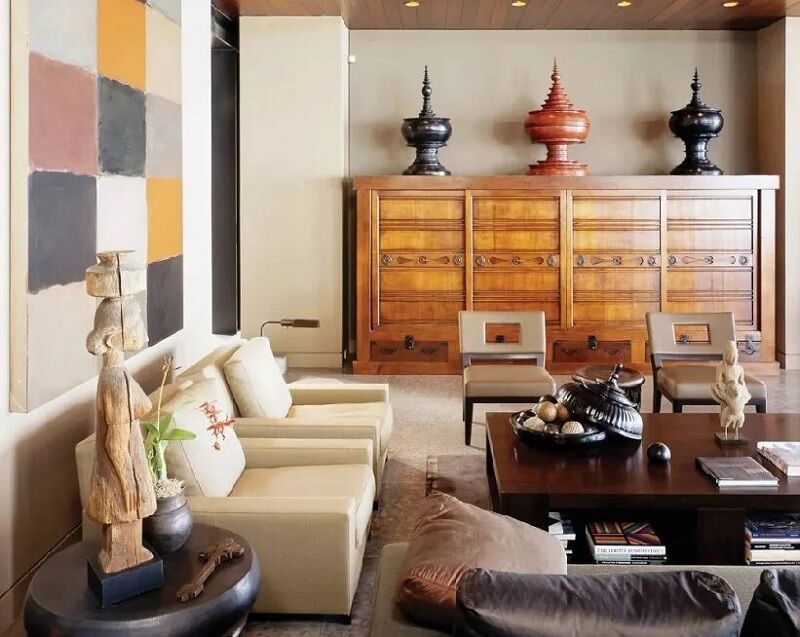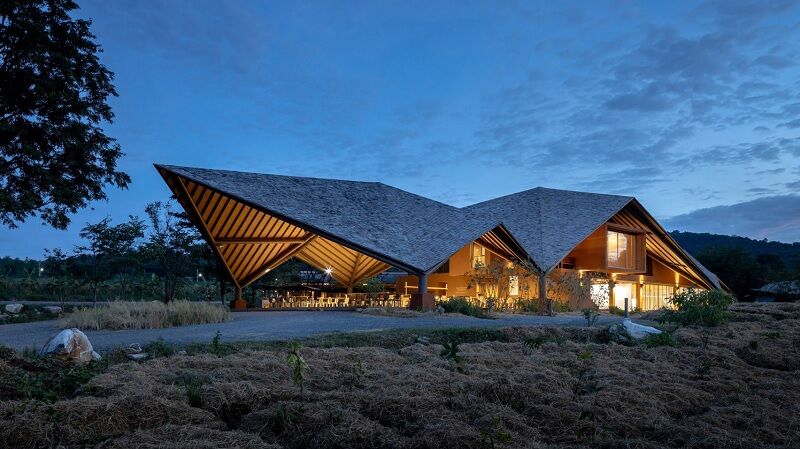Incorporating traditional Thai elements in modern home decor

Have you ever considered augmenting the appeal of your home with a balanced blend of revered tradition and contemporary interpretation? Could you envision the ageless allure of Thai architectural techniques intermingled with the clean and flowing aspects of modern design? This article intends to pave the way in uncovering the ways through which deeply-rooted Thai characteristics can be cohesively embedded within modern home decor.
Thai architectural philosophy, celebrated for its harmonious synthesis with the natural environment, its calculated utilisation of natural illumination, and its intuitive techniques for maintaining thermal equilibrium throughout diverse seasonal fluctuations, can afford your living space with a sense of authenticity, complemented by the refinement and minimalistic appeal of contemporary design.
From the deployment of teak wood shutters to the usage of steep roofing structures for optimal rainwater direction, there exists an abundance of ideas that can be extracted from Thai design. We invite you now to embark on this explorative journey, a journey that will guide you on how to revamp your living space into a serene, Thai-influenced sanctuary that elegantly preserves a sophisticated contemporary design language.
Exploring traditional Thai elements in home decor

The fusion of traditional Thai architecture and modern home decor introduces a unique charm that brings a sense of calm and serenity. This harmonious blend brings with it a style that’s bold in statement yet rooted in heritage. However, to incorporate it into your decor effectively, you must first understand the qualities that make Thai design stand out.
Key features of Thai design
In Thai architecture, intricate art, and design blend seamlessly with practicality. Here lie the elements necessary to achieve a balance between heritage and modernity.
Teakwood shutters: These are known for their towering presence of 36 meters and form a key characteristic of traditional Thai homes. Featuring 26 shutters, they are a structural innovation designed to allow outdoor elements to freely blend with the indoor space, providing easy access to different areas and ensuring natural light.
Central Terrace: It’s the equivalent of the modern-day living room, with an emphasis on open spaces for connectivity and fluidity. This area promotes ventilation and serves as the home’s central hub, connecting different sections of the house.
Use of Light: Thai design optimises natural light remarkably well. An example is the clever use of skylights and sliding windows in the bathroom space. The light access is precisely controlled by Venetian blinds, while vanity lights ensure practical illumination.
Importance of cultural heritage
Recognising the value of cultural heritage is paramount when incorporating traditional Thai elements into modern home decor. The Thai way of life, reflected in their architectural choices, has lessons for modern decor. For instance, the usage of low and squat furniture, owing to floor-dwelling habits, has implications for space optimisation.
An example is the “Chān”, a unique feature in Thai houses, facilitating extended family living and acting as a connective passage between homes. This concept, if used in contemporary architecture, can redefine residential spaces, encouraging interaction and community living.
Integrating Thai styles into modern interiors

Bridge the gap between traditional Thai aesthetics and contemporary home decor by adeptly incorporating Thai elements in modern interiors. This harmonious fusion is more than a style – it’s a tribute to Thai culture and heritage while adapting to the evolving design preferences of modern society.
Thai inspired living and dining areas
Transform your living and dining areas, the heart and soul of a home, into a space that exudes Thai tradition marred with modernity. Natural materials, like teak wood, are a hallmark of Thai design. Consider incorporating teak wood shutters, striking at a height of 3.6m, they do not only serve the functional purpose of inviting natural light inside but also lend an earthy texture to the space.
The low dining tables and floor cushions, rooted in Thai culture, can redefine the communal dining experience. A central terrace, common in Thai homes, can act as a breath of fresh air, ensuring year-round thermal comfort and doubling as a versatile space for family gatherings or personal musings. Central terraces offer easy access to the living and dining zones, lending a seamless flow of movement.
Bedrooms and private spaces
Every corner of your home must echo your personality while maintaining a reverent nod to traditional Thai elements. Bedrooms and private spaces, usually a sanctuary of peace, can be meticulously designed to combine privacy and Thai-inspired aesthetics.
Steep roofs, sloping upward by 40 degrees allow for rapid rainwater runoff, a practical element that can be visually interpreted in modern bedroom designs. Skylights make an excellent choice for allowing an abundance of natural light with controlled Venetian blinds, a soothing element in Thai design.
Accentuating decor with Thai art and textiles
Thai art and textiles can do wonders when incorporated into modern home decor. By accentuating your decor with these elements, not only do you bring in traditional Thai elements but you also refurbish your space with a fresh, vibrant look.
Selecting art pieces
Choosing Thai art can be an exploration as well as an exercise in refinement. Often, Thai art boasts traditional patterns and vibrant colours, offering you a palette of options to indulge in. Essential among these choices are unique pieces of Thai wall art, which when aligned with your personal style, can add elegance and warmth to your living space.
A key aspect in this selection process, however, is to ensure that the artwork aligns with the overall theme of the home while simultaneously standing out. When combined, these elements contribute to a bolder statement for your space, enhancing the aesthetic appeal of your home decor.
Incorporating fabrics and materials
Genuine incorporation of traditional Thai elements and textiles can bring alive any modern setting. Earthy elements and fabrics in browns, beiges, and light greens can add to the serene atmosphere. Known for their availability, versatility, and longevity, using natural materials like stones and pebbles can lend a peaceful, energising atmosphere to your living space.
Balance is indeed vital in this context. It doesn’t hurt to mix old-style pieces with modern ones to create an eclectic, yet harmonious home interior. A splash of vibrant colours or patterns against curved furniture can provide an enticing contrast, without overpowering the feeling of serenity.
Sustainable practices in Thai modern decor

Environmentally friendly materials
Incorporating Traditional Thai Elements in Modern Home Decor goes beyond aesthetics; it’s an exercise in sustainability. Central to Thai decor are materials not just rich in cultural significance, but environmentally friendly as well. Teak wood and bamboo, for example, are prominently used. They’re both abundant and fast-growing, tapping into the ethos of sustainability while adding a distinctive touch to your decor.
Further, you’ll find a fondness for natural fibres like cotton and silk in traditional Thai decor. Made into curtains, rugs, or upholstery, these materials are both sustainable and provide an elegant texture contrast to the hardwoods in your home.
Design techniques for sustainability
The design techniques employed in Thai decor are intrinsically suited to sustainability. Let’s explain that concept via some important techniques.
Natural light utilisation
Interior design in Bangkok, for instance, capitalises on natural light to reduce dependence on artificial lighting. The lofty stairs, expansive central terraces and tall wooden shutters, are a part of this strategy. It’s not just about large, open windows; it’s about thoughtful placement of skylights and reflective surfaces, designing spaces to maximise daylight.
Green integrations
Another discerning aspect lies in the integration of greenery into living spaces. This can bring vibrant colours and make the environment eco-friendly. Terra cotta pots with leafy plants or vibrant flowers not only add to the aesthetics, they increase the oxygen level indoors, improving air quality.
Functional designs
Thai homes often boast steeply sloping tile roofs, arching upwards about 40 degrees. This design, apart from reflecting traditional Thai architecture, allows for rapid rainwater runoff, proving equally functional and sustainable.
So there you have it. You’re now equipped with the knowledge to effortlessly blend traditional Thai elements into your modern home decor. Remember, it’s all about balance. Use teak wood and bamboo to add warmth, and don’t forget the power of textiles to inject personality. Keep in mind the importance of natural light and greenery to create a serene living space, and consider steep roofs for practicality and a nod to Thai architecture. By incorporating low furniture and communal spaces, you’ll not only create an aesthetically pleasing environment but also promote community interaction. Finally, honour the Thai cultural heritage through carefully selected art pieces that align with your home’s theme. With these tips, you’re well on your way to creating a sustainable, style-forward home that beautifully marries traditional Thai elements with modern decor.
Want to know more, Top 10 Feng Shui master tips to re-organise your home. The ancient wisdom of Feng Shui looks at how the life energy or “qi” in the environment, like our homes, affects our life, health, relationships, and prosperity. In this article, we want to share tips that some famous Feng Shui masters, who are sought after by celebrities, tycoons, politicians, and big brands, recommend to help you re-organise your house.
Latest Thailand News
Follow The Thaiger on Google News:


























